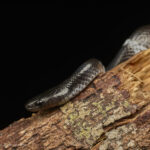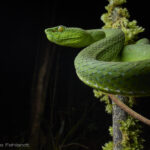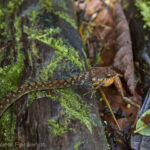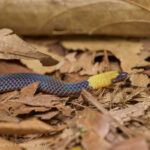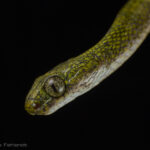Borneo red snake or Stolickza’s stream snake, Paraxenodermus borneensis (BOULENGER, 1899) – of Sarawak/Borneo – around 1120m ASL.
Paraxenodermus borneensis (Xenodermidae) is a rare, Borneo-endemic snake, originally described as Stoliczkaia borneensis (Boulenger, 1899) and reassigned in 2021—based on morphological and molecular data—to the monotypic genus Paraxenodermus. The holotype (BMNH 1946.1.15.58) comes from Mount Kinabalu (~1,280 m). Diagnostic traits include a distinctly demarcated head with large head shields, 10–11 supralabials, and an extra row of 4–6 small scales between the frontal and prefrontals; the body is slender with 206–208 ventrals and 123–128 subcaudals, reaching a total length of roughly 70–80 cm. The dorsum bears numerous pale spots on a dark ground; the venter is pale with dark flecking. Confirmed records are from Sabah (Kinabalu, Crocker Range, Trus Madi) and Sarawak (Gunung Murud); occurrences in Kalimantan are sometimes mentioned but remain sparsely documented. The species occupies montane, stream-associated habitats at about 950–2,100 m elevation, is nocturnal, and is often found on rocky stream banks. Reproduction is oviparous. Overall, it is known from very few specimens and observations, and current knowledge is accordingly limited.

